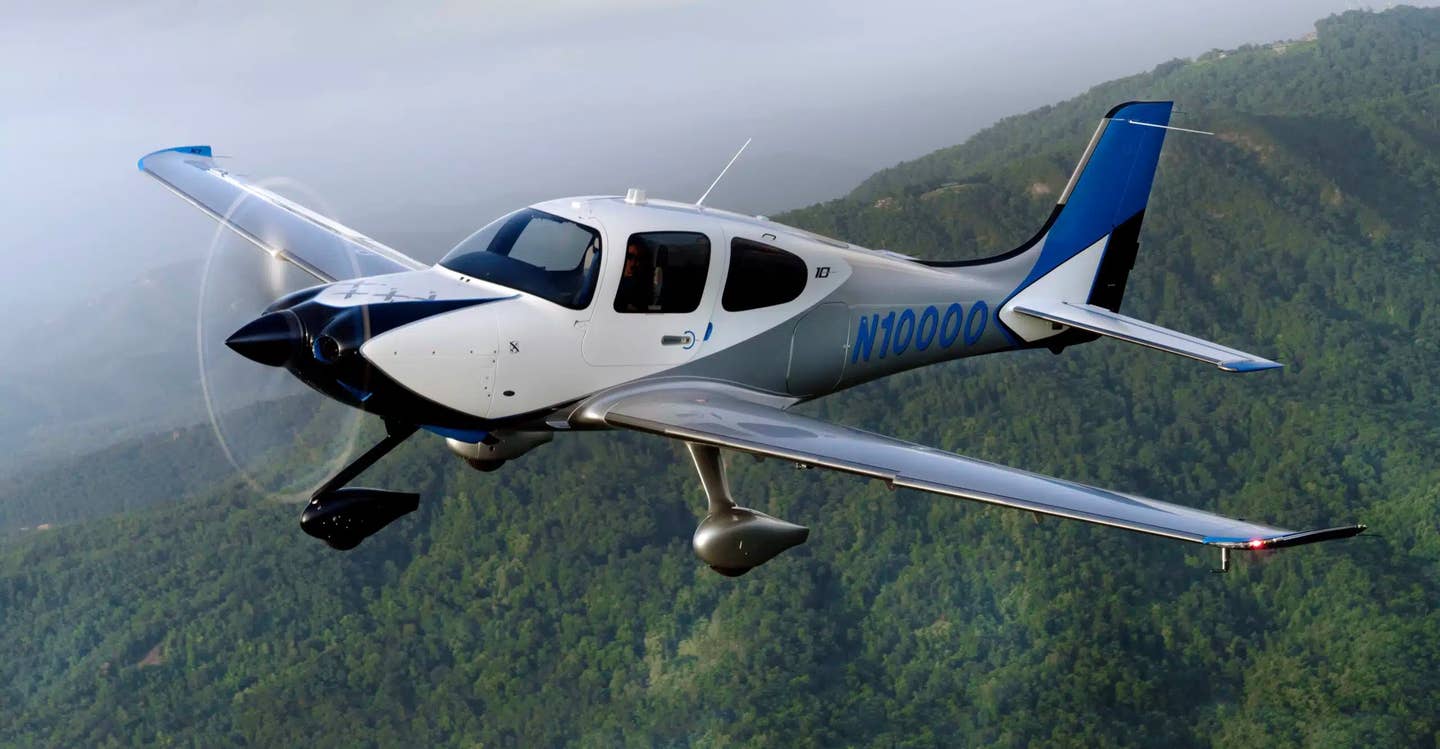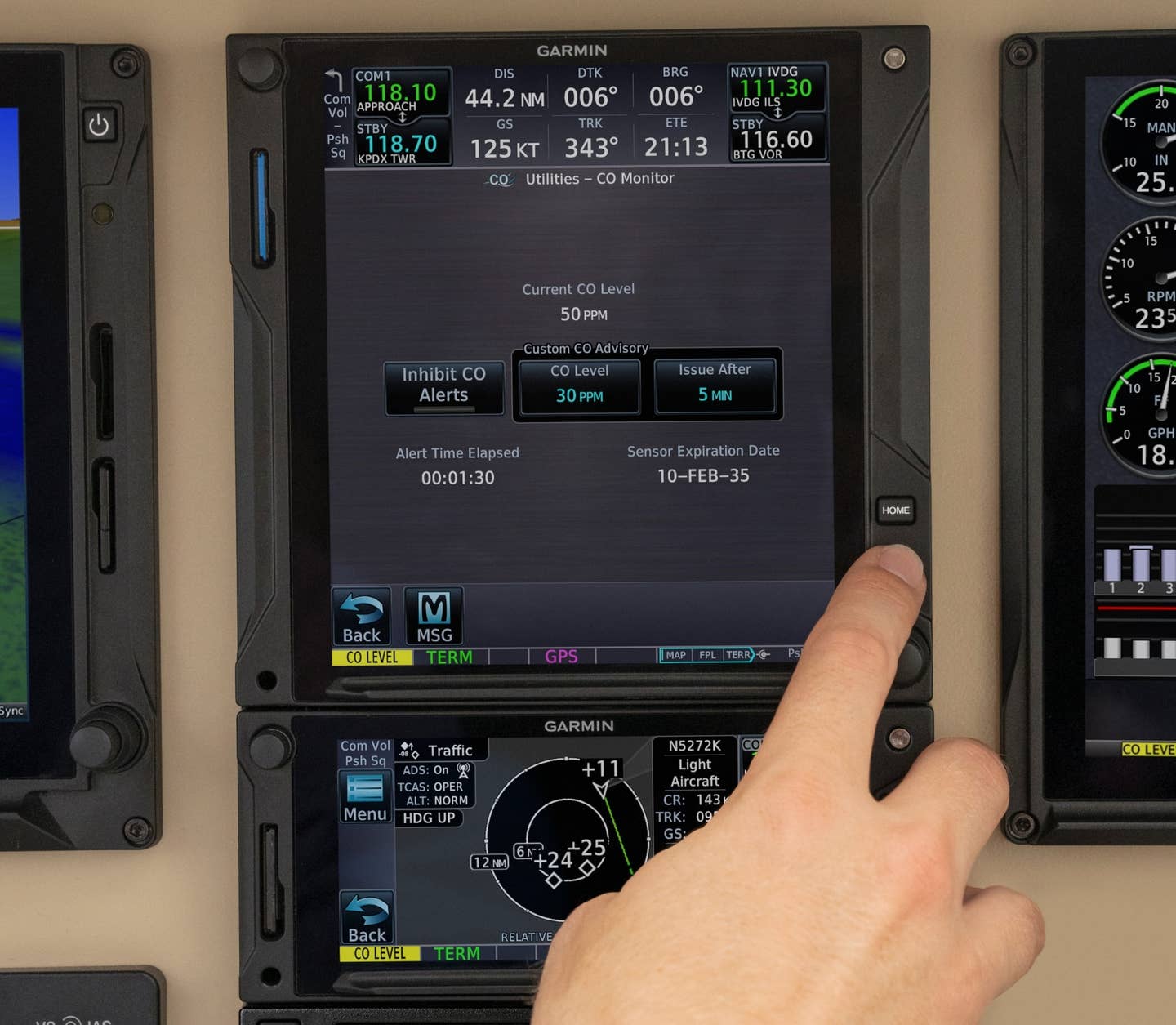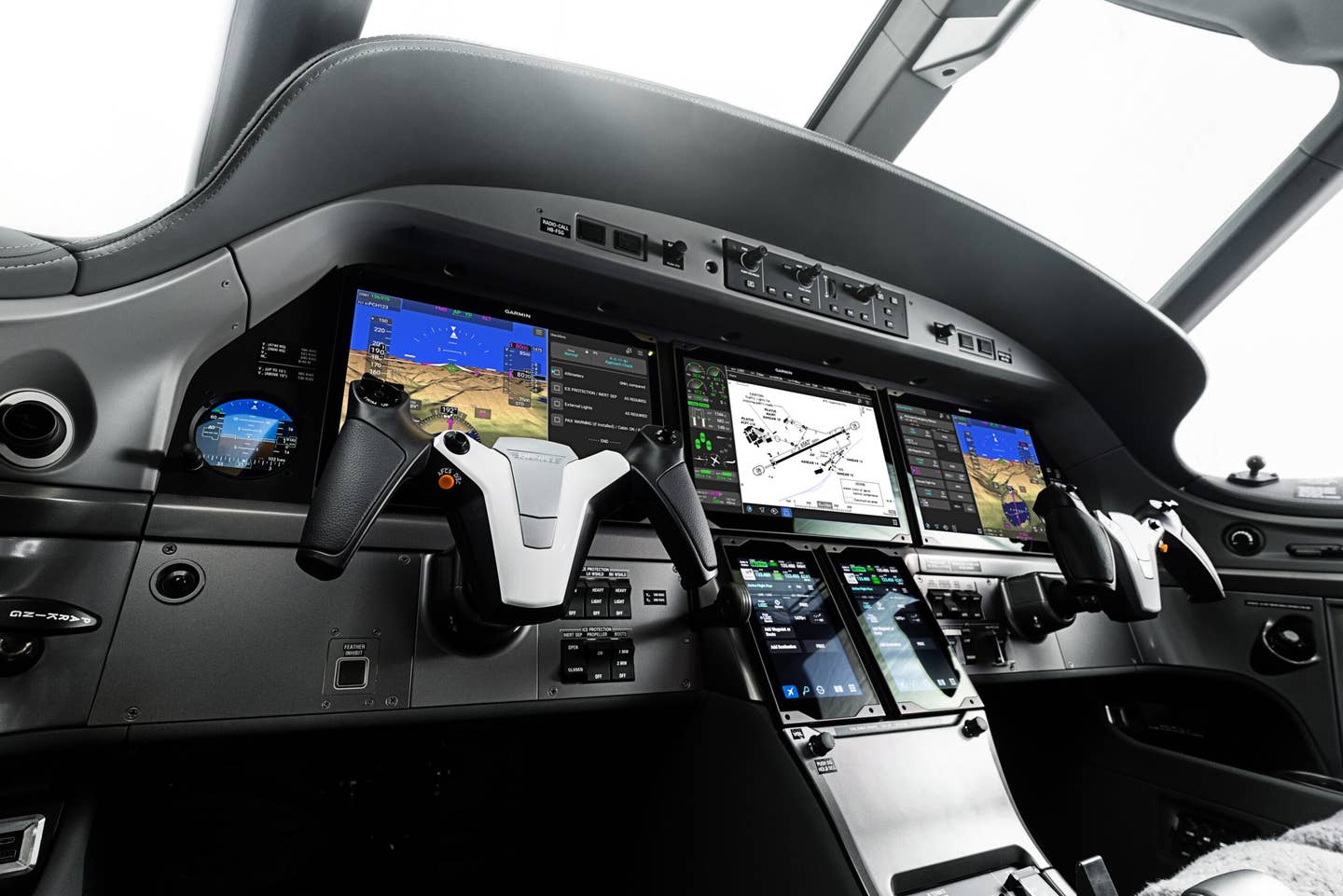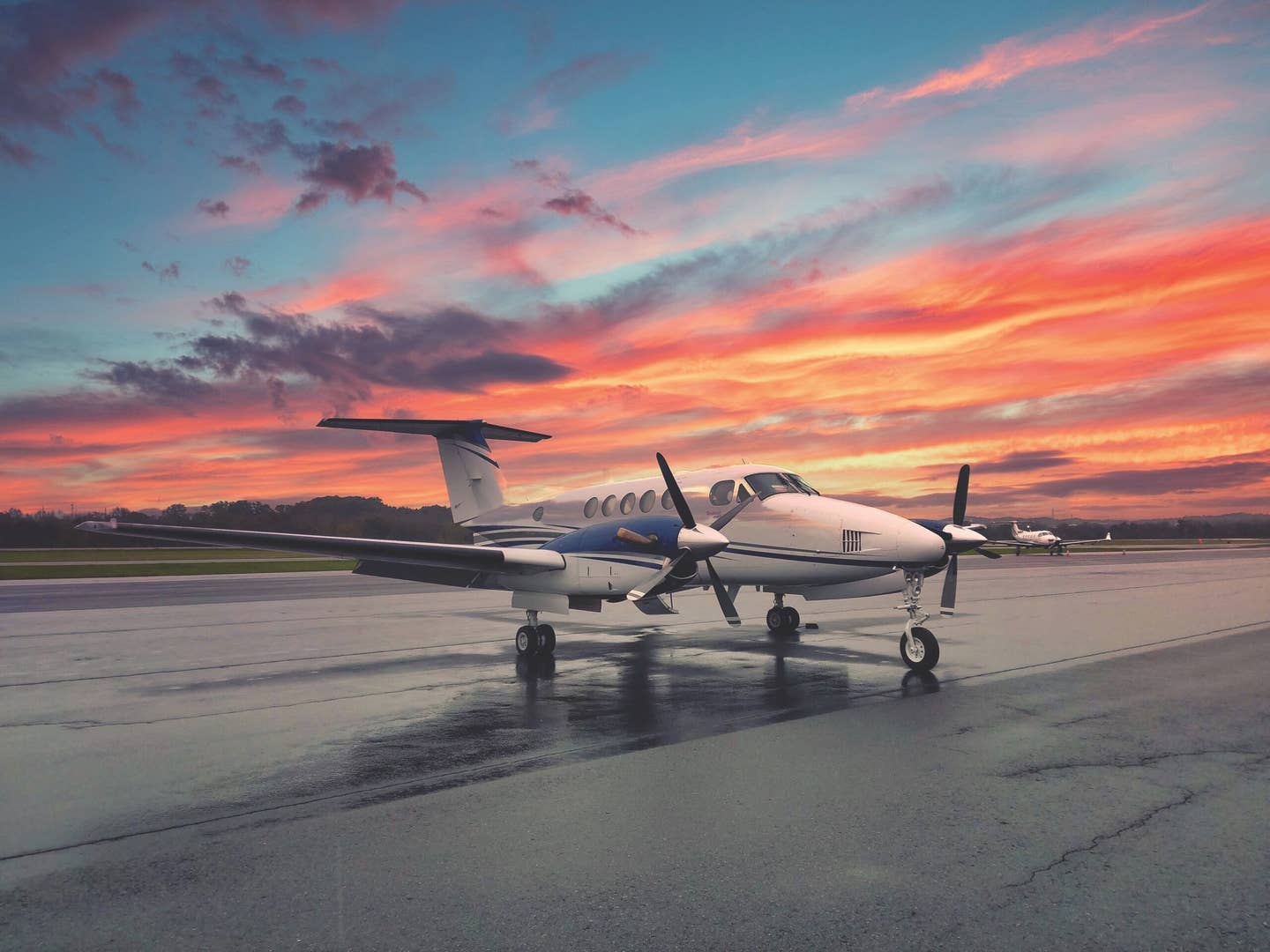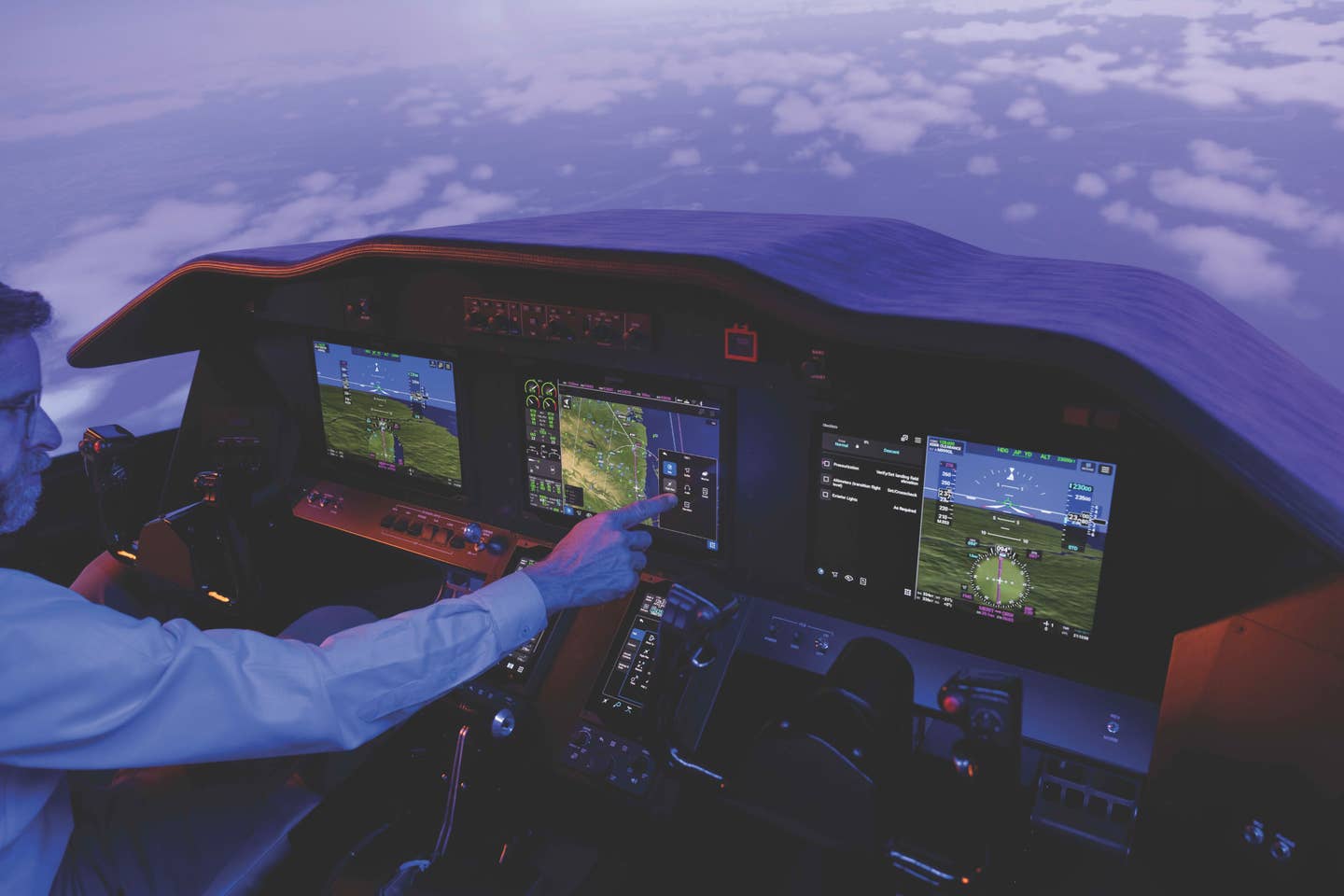
The precision flying required to aim for the three wires on a Navy carrier makes understanding angle of attack critical to fighter pilots. Derek Gordon/Shutterstock
Early on, pilots are taught that safety of flight depends on, among other things, a consistent flow of air across the airfoil and a positive angle of attack to produce lift. AOA is the angular difference between the wing’s chord line and the relative wind. Increase back pressure on the controls and lift increases, up to a point. Too steep an angle of attack, and that sweet lift-generating airflow goes haywire. Reduce the angle of attack, and the wing will fly once again. So vital is your awareness of the aircraft’s AOA at all times, the Wright brothers’ first airplane included a rudimentary AOA indicator built from a piece of wood and a length of yarn. So if the physics behind this are simple, why do these loss-of-control accidents occur?
The FAA’s Dave Sizoo says, “There’s a loss-of-control fatal accident, on average, once every three days.” Sizoo, a former F/A-18 pilot, is an agency flight-test pilot. He spoke to the seldom-spoken-about disconnect between what we teach new pilots about angle of attack and how they translate that new knowledge into good flying habits once they climb into an airplane. “You’re tested on the theory behind angle of attack in the knowledge exam,” Sizoo says. “But when a new pilot enters the cockpit, they usually can’t find the angle of attack indicator.” The reason is that AOAs don’t exist in most small airplanes. The FAA promoted their use, but they are still not prevalent in the GA fleet. “When a student does not have an AOA indicator in the cockpit, they are taught to use airspeed as a proxy,” Sizoo says. “However, the published stall speed they learn is only valid at one weight—in coordinated, unaccelerated flight—and that may create a false sense of safety beyond those conditions.” In ground school, new civilian pilots learn, for example, that aircraft stall speed increases by 40 percent in a 60-degree bank when the pilot tries to maintain level flight. This increases load factor. Sadly, history has proven that many pilots who overshoot that turn from base to final aren’t thinking about how their 85-knot base-to-final speed might suddenly need to jump to nearly 120 in order to maintain a similar safety margin above stall. The precision flying required to aim for the three wires on a Navy carrier makes understanding angle of attack critical to fighter pilots. That’s why, early on, Navy- and Air Force-trained pilots learn their fighter’s angle of attack indicator is accurate at all weights, configurations, accelerations and angles of bank.
A Better Way?
So why not create AOAs for GA pilots—instruments that actually display warnings to pilots as they approach the critical angle of attack, a device that would be effective in all flight regimes? Thanks to initial support from the FAA, companies such as Garmin, Safe Flight, Aspen Avionics and Icon did just that with AOAs. The General Aviation Joint Steering Committee says, “To reduce the risk of inadvertent stall/departure resulting in [loss-of-control] accidents, the GA community should install and use AOA-based systems for better awareness of stall margin.” Installation efforts were made easier in 2016 by Non-Required Safety-Enhancing Equipment, better known as FAA policy PS-AIR-21.8-1602. NORSEE allows for the installation of new, nonrequired equipment when it will measurably increase aircraft safety. Simplified installation through NORSEE has also helped to overcome one of the primary objections to supplemental safety equipment: price. Garmin’s GI-260 AOA, for example, retails for just $249. Installation time varies by aircraft type. The failure of any NORSEE-installed safety equipment cannot affect the safety of flight, which is why an AOA can’t be used as the primary source of flight guidance.
Installation of an AOA doesn’t mean that pilots will use it, however, or even understand what it’s telling them. That will require a change to the way we train pilots. Icon Aircraft has taken a lead role in that direction, integrating use of the AOA from day one of its new pilot-training program. Climb into the cockpit of an A5 and everyone notices the angle of attack indicator prominently displayed just below the glare shield. Icon’s AOA resembles a small airfoil that moves in relation to the aircraft’s angle of attack. It’s something Icon’s chief test pilot Brett Davenport calls an audacious move, “especially the sensical way the company designed the human-vehicle interface.” So useful is the AOA, according to Davenport, “You could cover up the rest of the panel and make very stable approaches using only the AOA.”
It took me just a few minutes to get used to the Icon’s AOA during departures and approaches when I flew the aircraft this past year. Genesah Duffy, Icon’s chief pilot and manager of flight operations and training, says that’s not at all unusual. “We use it on climb, descent and landing profiles and a number of emergency procedures,” like the maximum-performance box-canyon escape taught to quickly avoid a nearby hazard. “That’s essentially a 60-degree bank, 180-degree turn using max power. The pilot rolls into the turn and pulls until the AOA reaches the midpoint in the yellow arc.” Without an AOA, such a maneuver would be impossible, Duffy says, because “there’s no time to calculate the aircraft’s weight, bank angle or stall speed. With an AOA, I know exactly how close the wing is to a stall.” The simplicity of the AOA stands out when the device’s wing is placed on the dotted line, a point that represents best lift over drag. No muss, no fuss. “You can fly this aircraft closer to the extremes of its envelope than any other aircraft,” she says, “and not in a way that that’s dangerous or reckless.” When used correctly, “The AOA just gives the pilot more information.”
Ken Bannon, Safe Flight’s director of corporate and commercial sales, says Safe Flight Instrument Corporation has created safety- and performance-improvement equipment since 1946. Safe Flight created the first practical stall-warning and angle of attack systems. Founder Dr. Linden Green invented a lift detector back in the early 1940s that lives on today—unknown to many pilots who often don’t even realize they’re flying with Safe Flight’s ubiquitous lift transducer. They just flick the tiny metal tab protruding from the leading edge of the wing during the preflight as claim they’re “testing the stall warning.” Safe Flight’s AOA comes standard on new Cessna 172s and is optional on the 182 and 206. It’s also an option on the Kodiak and a variety of Piper aircraft.
Unlike Icon’s AOA, Safe Flight’s AOA indexer typically sits on the glare shield and uses a system of sequential LED lights and audio (similar to a Geiger counter) to indicate the aircraft’s proximity to the leading edge stagnation point. As an airplane’s angle of attack increases, the indexer’s lights begin changing color from green to yellow and eventually red. The Geiger-counter audio also increases in frequency as the aircraft approaches a stall. The device is accurate regardless of aircraft weight, wing loading, gear configuration, air density and slip conditions.
Fasten Your Seat Belt
Like a seat belt, an angle of attack indicator only works if the pilot actually uses it. While an AOA offers pilots practical situational awareness about their proximity to a stall, using one requires training. Icon’s Duffy admits, “There’s a little bit of resistance from people who have never flown with an AOA.” People look at the A5 and ask: “What’s your approach speed?” or “What’s your VX or VY?” Experienced Icon pilots don’t really know those speeds—or care. They just approach at the angle of attack that puts the little wing on the white line marked “approach.” Duffy says that after an hour or so of flying with an AOA, “new pilots get really comfortable with it and start handling the aircraft on their own. Still, the most common question I hear is why don’t more aircraft use an AOA?” Other than those who are military-trained, few pilots and instructors have ever flown with one, and because the law of primacy says we remember what we learned early on, airspeed remains king. There’s also no current data that proves use of an AOA reduces LOC-I accidents.
The FAA has no plans to require AOAs on small GA aircraft so as not to increase the cost of flying. That means their use will expand only if pilots begin demanding them—which they just might when they realize that, unlike a traditional airspeed indicator, an AOA delivers accurate angle of attack information no matter the aircraft’s weight, configuration or angle of bank. Duffy thinks it’s going to take a push from pilots, flight instructors and aircraft builders who realize the critical importance of managing an airplane’s energy state at all times. “The more people who start implementing AOAs in training—and not just with the Icon but at other training organizations, including Part 141 programs—I think that’s when you’ll see a shift.” That means it’s up to pilots to equip as they see fit and train to use the AOA properly.
This story appeared in the December 2020 issue of Flying Magazine

Sign-up for newsletters & special offers!
Get the latest FLYING stories & special offers delivered directly to your inbox

